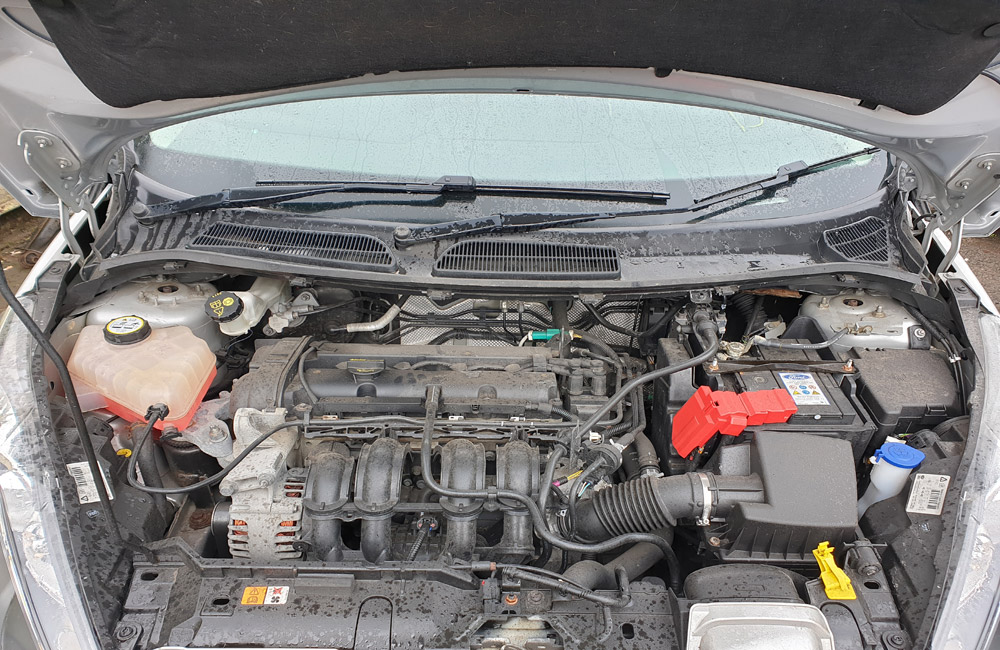Discovering the Advancement of Engines: From Timeless Designs to Modern Marvels
From the initial heavy steam engines that powered the Industrial Transformation to the appearance of inner combustion engines that transformed movement, each stage has actually contributed to better performance and capacity. As we check out these milestones, one need to take into consideration how the future of engine layout may unfold, testing our understandings of power and effectiveness.
The Birth of Engine Innovation
The arrival of engine modern technology marked a pivotal moment in human development, transforming power conversion and transport. The earliest engines emerged from the demand to harness mechanical power for useful usage, leading to the growth of tools that transformed different power types into movement (ford fiesta engine).
The advancement of the interior combustion engine and the development of the vapor engine catalyzed an extensive shift in industrial abilities. These engines not only enhanced performance but also expanded the extent of human flexibility, allowing unprecedented transportation possibilities. The early prototypes prepared for the mechanical globe, assisting in the increase of sectors and reshaping societal frameworks.
As engine layouts developed, they advanced and incorporated cutting-edge materials engineering concepts, paving the way for modern-day developments - ford fiesta engine. The birth of engine modern technology fired up an unrelenting pursuit of performance and power, establishing the phase for the vibrant advancement of transport and industrial equipment that would adhere to
Steam Engines and Their Impact

The steam engine's effect was specifically obvious in the transportation field (ford fiesta engine). Steam-powered locomotives promoted the rapid movement of goods and people throughout substantial distances, properly shrinking the geographical barriers that had formerly impeded profession and communication. Steamships transformed marine travel, allowing for quicker and extra trustworthy crossings of seas and rivers.
In market, heavy steam engines powered factories, making it possible for mass manufacturing and the increase of city facilities as centers of economic task. Heavy steam technology fostered advancements in engineering and production procedures, laying the foundation for future improvements in engine style.
The Increase of Internal Burning
Frequently outweighing vapor power, the surge of inner combustion engines marked a transformative shift in transport and industry throughout the late 19th and very early 20th centuries. The development of these engines, defined by their ability to shed gas within the engine itself, allowed greater effectiveness and power contrasted to standard steam engines. Introducing developers such as Nikolaus Otto and Rudolf Diesel played important functions in perfecting engine layouts, leading to prevalent fostering in cars, watercrafts, and industrial machinery.
The interior burning engine's small dimension and reasonably light-weight nature helped with the emergence of personal cars, reinventing specific movement and reshaping urban landscapes. By making it possible for faster travel and the effective transport of products, these engines militarized economic growth and promoted globalization. The adaptability of fuel choices, including gasoline and diesel, better enhanced their charm, enabling diverse applications across numerous industries.
Despite the environmental worries that would later on develop, the initial allure of inner combustion innovation stocked its transformative possibility. As society embraced this development, the structure was laid for modern-day transport systems, developing internal burning engines as a cornerstone of commercial improvement and day-to-day live throughout the 20th century.
Developments in Engine Efficiency
As interior burning engines became important to transport and sector, the focus shifted towards enhancing their efficiency to meet growing needs for performance and sustainability. Innovations in engine style, product science, and technology have actually substantially added to this evolution.
One major advancement is the development of turbocharging, which permits enhanced air consumption, resulting in even more full fuel burning and boosted power result without expanding engine dimension. Additionally, variable shutoff timing systems have been carried out to optimize engine efficiency throughout various RPM varieties, thus improving fuel performance.
The use of innovative fuel injection modern technologies, such as direct shot, has actually additionally played a crucial function. This technique allows for more precise control over the fuel-air combination, promoting much better combustion and reducing emissions. Light-weight materials, including aluminum and composite components, have actually been adopted to minimize general engine weight, leading to improved efficiency.
These advancements mirror a wider trend within the auto sector, where the synergy in between engineering innovation and ecological factors to consider drives the recurring mission for higher efficiency in inner combustion engines. As a result, modern-day engines are now extra effective, cleaner, and reliable than ever, paving the means for a much more lasting future in transportation.
The Shift to Electric Power
With expanding concerns over ecological impact and nonrenewable fuel source dependence, the vehicle industry is experiencing a substantial change towards electric power. This change is driven by a mix of technical developments, regulatory stress, and changing consumer read this article choices. Electric vehicles (EVs) supply an engaging option to traditional interior combustion engines, flaunting lowered greenhouse gas discharges and reduced operating expense.
The rise of battery technology has actually been a video game changer, with lithium-ion batteries becoming much more affordable and reliable. Improved power density and faster billing abilities have made EVs more sensible for everyday usage. Governments worldwide are executing rewards and setting enthusiastic targets for phasing out fossil fuel cars, thereby speeding up the fostering of electrical power.
Major car manufacturers are investing greatly in research study and growth, resulting in the intro of a varied range of electric link designs. This includes not just auto but additionally business cars and public transportation services. As billing framework expands and battery modern technology remains to boost, the shift to electric power is poised to reshape the automotive landscape, promoting sustainability and development in the years ahead. The future of transport is electric, and the energy is indisputable.
Final Thought
The development of engine innovation stands for a substantial trajectory of advancement that has actually greatly affected transportation and sector. From the fundamental heavy steam engines to the transformative interior burning engines, each growth has actually contributed to boosted movement and economic development.
